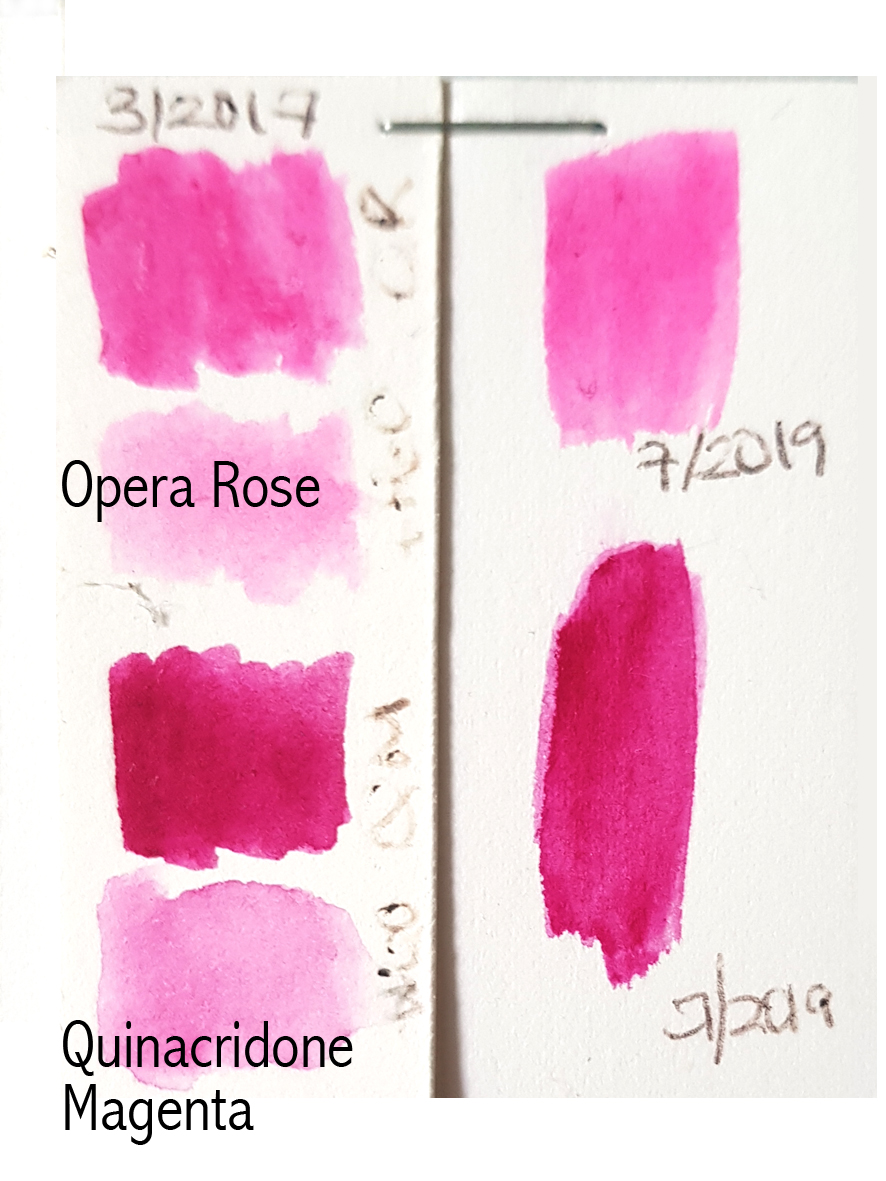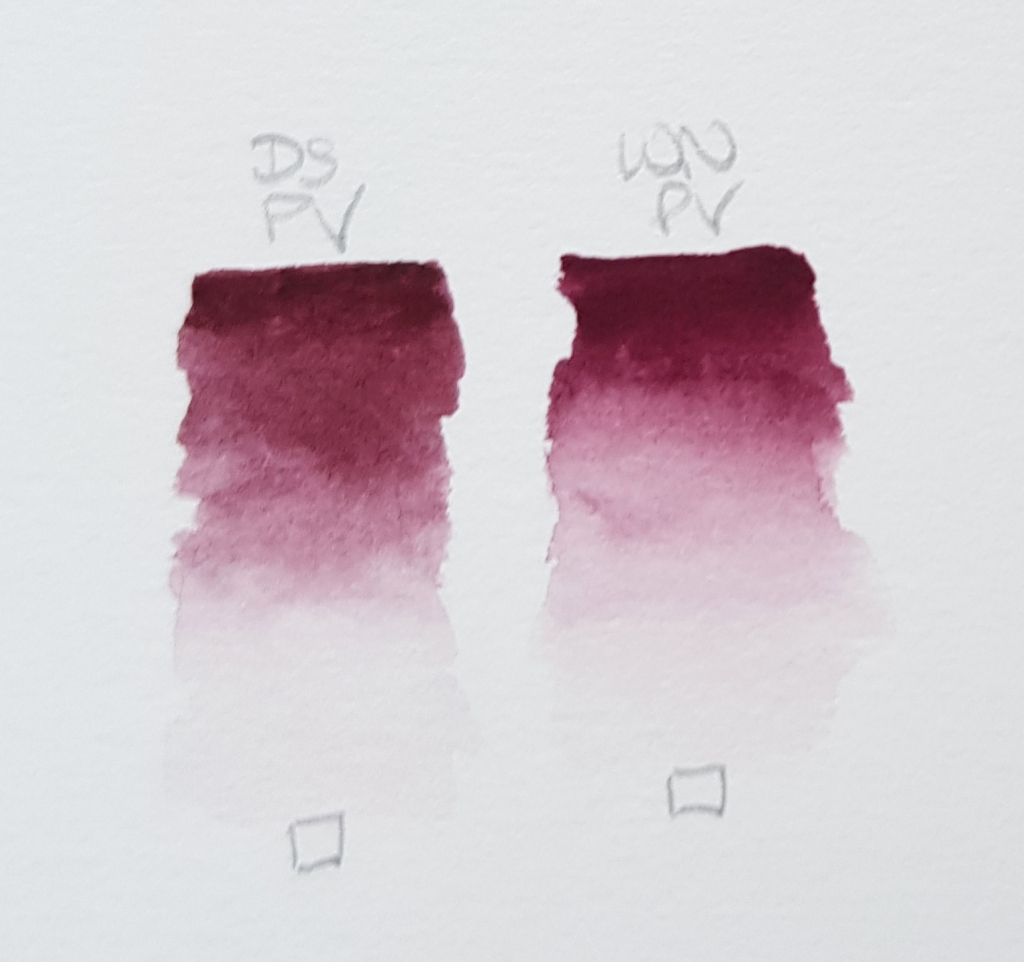Fugitives
We have all heard that dreaded word at some point in our painting career. But what does it mean? How do I know if I’m using a fugitive colour? It always seems to be the unanswered question!
What is a fugitive and why do they exist?
In history the standards set for pigments was not as important as it is to us now. As time went on pigment manufacturers experimented with different chemicals and natural substances to make even better and more reliable pigments.
During the impressionist period the demand was for bright and vivid colours. However, many of these bright pigments were still fugitive, unreliable and faded badly. The most unreliable were red lakes, madders, carmines, purples, red leads and chrome yellows. A great deal of historic paintings look very different today than when they were first painted because of this. The few more reliable pigments that were made were much more expensive and some famous artists just couldn’t afford them. It was the same for oil colours.
Vincent van Gogh favoured a vivid palette of colours and most of his paintings have faded. His ‘Sunflowers’ painting is a prime example of a fugitive yellow pigment, chrome yellow, which fades to brown in sunlight. Today the flowers look brown. You can see his paintings on this link: www.vangoghmuseum.nl/en/
In Victorian times new chemistry developed synthetic prismatic and brighter colours but a lot of these were still fugitive.
It wasn’t until 1984 that the standards became stricter with the introduction of testing. Nowadays, permanency and lightfast ratings are available for all pigments but there are still some to be aware of. Ratings for artists’ use are A, AA, I and II (companies who use asterisks or stars differ and are detailed in the company pigment lists further on). Anything less than this will not be as reliable for lightfastness. All this information can be found on watercolour company charts or online via their websites. See list of standards below:
I – Very lightfast
II – Good lightfast
III – Average lightfast
AA – Extremely permanent
A – Permanent
B – Moderately durable
C – Fugitive
V – well don’t go there!
n.r. – Not rated by ASTM
I, II ratings are given by the ASTM (American Society for Testing Materials). The society started testing pigments in 1984 to set standards for the performance of art materials, including lightfastness. Winsor & Newton use both ASTM and permanence ratings. In the ASTM system ‘I’ is the highest lightfastness available and ‘V’ is the lowest. Pigments that are not rated by ASTM or the companies who make them bear the symbol n.r.
A, AA – The Winsor & Newton permanence classifications measure not only lightfastness but also general stability of the pigment.
I have made a small A6 chart with all these rating symbols plus transparency symbols for you to download here. Watercolour-rating-symbols Keep it handy!
Which pigments should I be wary of?
W& N professional
Alizarin Crimson (B) – as we learned last month Permanent Alizarin Crimson is good, this is lightfast A
Rose Madder Genuine (B)
Opera Rose (B, really a C!)
Aureolin (II – PY40 this fades to brown despite being rated II)
Daniel Smith
Opera Pink (IV)
Alizarin Crimson (IV)
Aureolin (II – PY40 this fades to brown despite being rated II)
Sennelier
Helios Purple (III)
Dioxazine purple (III)
Quite a few Sennelier pigments are not rated. It’s best to test them yourself to be sure.
Schmincke
Symbols vary for Schmincke colours, they are as follows:
***** extremely lightfast, **** good lightfastness, *** lightfast, ** limited lightfastness, * less lightfast, – not lightfast
Alizarin crimson (*)
Madder lake deep (**)
Rose Madder (**)
Schmincke violet (**)
Indigo (**)
Olive green (**)
These Brilliant pigments are not rated, would avoid:
Brilliant red violet
Brilliant opera rose
Brilliant purple
Brilliant red violet
Brilliant blue violet
Daler Rowney
Symbols vary for Daler Rowney, they are as follows:
**** Permanent, *** Normally permanent, ** Moderately permanent,
* Fugitive
Aureolin (** PY40)
21 colours offer ****
56 colours are rated ***
White Nights
Symbols vary for White Nights colours, they are as follows:
*** high lightfast, ** medium lightfastness, * low lightfast
Hanza yellow (*)
Orange lake (*)
Scarlet (*)
Claret (*)
Rose (*)
Vermillion (*)
Violet rose (*)
Violet (*)
Blue lake (*)
M. Graham
Alizarin crimson (III)
Below is a lightfastness test I did for Opera Rose and Quinacridone Magenta over a two year period (2017 left side and 2019 right side). The Opera Rose is still bright but all the florescent additive has disappeared making it look less intense in colour. The Quinacridone Magenta (PR122) has not altered. The Winsor and Newton (Opera Rose) and Daniel Smith (Opera Pink) versions of this vivid pink are the most reliable across brands using PR122. Both have added fluorescence.

If painting for an exhibition where your work will be for sale, always use lightfast pigments. If you have to use a pigment which is less permanent then ensure you put a label on the back of your framed painting stating not to hang it in direct sunlight.
I recommend watching the Winsor and Newton video ‘Masterclass on Colour Permanence’ to see how a simulated 100 year lightfast test changes these fugitive colours; Rose Madder Genuine, Alizarin Crimson and Opera Rose. Here is the link: www.winsornewton.com/uk/masterclass/permanence-in-colour/
So, the secret is to always check the watercolour company rating charts before you buy or look for the ratings on tubes or pans as you shop! If in doubt colour test the pigment by painting it onto watercolour paper and leaving it on a really sunny windowsill for at least 3-6 months.
I hope this blog has answered a few questions for you. Please share it to help others too! Thank you.
Happy painting and see you next month!
Email address:jackieisard@googlemail.com
Facebook:https://www.facebook.com/jackieisardbotanicalnaturepainting/
Instagram: @jackieisard
Blog: https://jibotanicals.com/
Web: https://www.jibotanicals.co.uk/
Etsy shop: https://www.etsy.com/uk/shop/jibotanicalsGifts













































































































































































